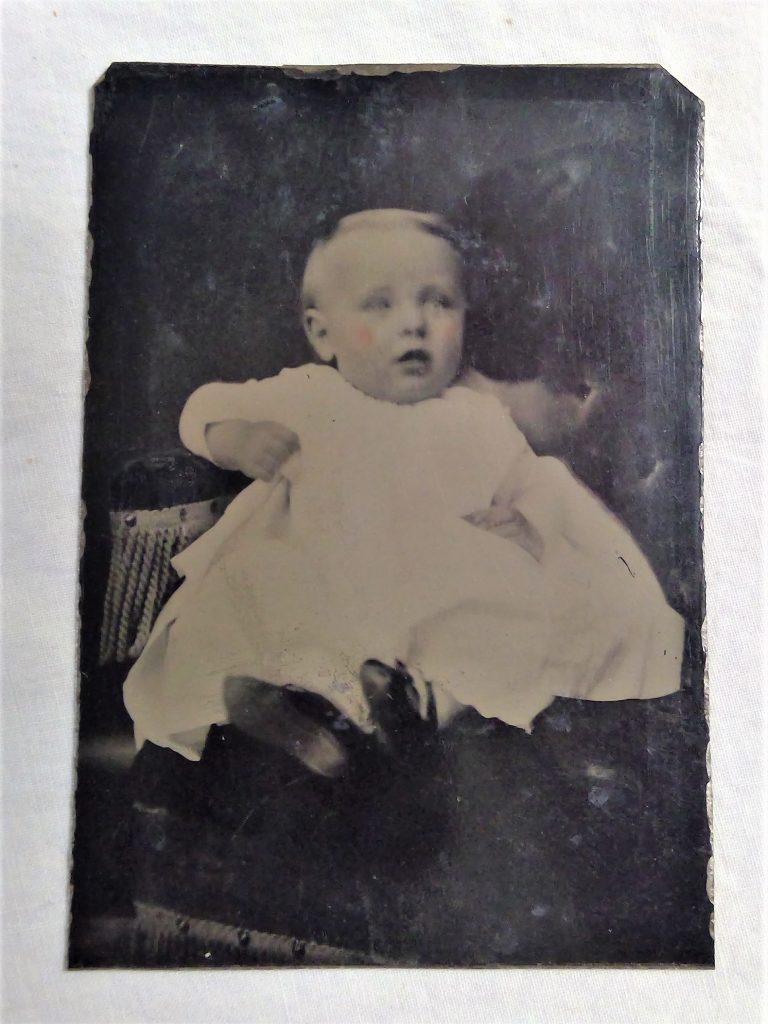Object Spotlight: Historic Photographs
In the past three weeks, the Plymouth Historical Society has completed an inventory of 47 historic photographs, including 4 images mounted in specialized hinged cases trimmed in gold and lined with velvet. Set in their jewel box-like cases, the photographs seem extra precious.
Although hundreds of thousands of photographs like these exist in museum collections all over the world, the word “precious” still applies. These are among the oldest photographs ever produced.

A daguerreotype like this was most likely made between 1839 and 1860. It is easily identifiable as a daguerreotype because of its mirrored surface. This surface produced a rich, vibrant image, but was only visible when held at a certain angle. The daguerreotype was almost completely superceded by 1860 as a result of the invention of the ambrotype, tintype, and paper photographic processes.

These two portraits are ambrotypes. Framed as they are, it would normally be difficult to differentiate an ambrotype from a tintype. The text stamped in the lower right corner of each golden mat reads “Cutting’s Patent.” This refers to the American inventor James Ambrose Cutting who patented the ambrotype photographic process in 1854.

This unframed photograph is a tintype. A tintype looks similar to an ambrotype when framed under glass. Unframed, it is easy to tell them apart. An ambrotype is made from a glass plate, whereas a tintype is made from a tinted metal plate. Tintypes were invented in 1853 but came into widespread use in the United States after Hamilton Smith patented the process in 1856.
We do not yet know the names of the individuals in these photographs. The information may be lost, but hopefully, it is simply waiting to be rediscovered. Our archives may hold the key to identifying these men, women, and children who were most likely among the first settlers of the Town of Plymouth.